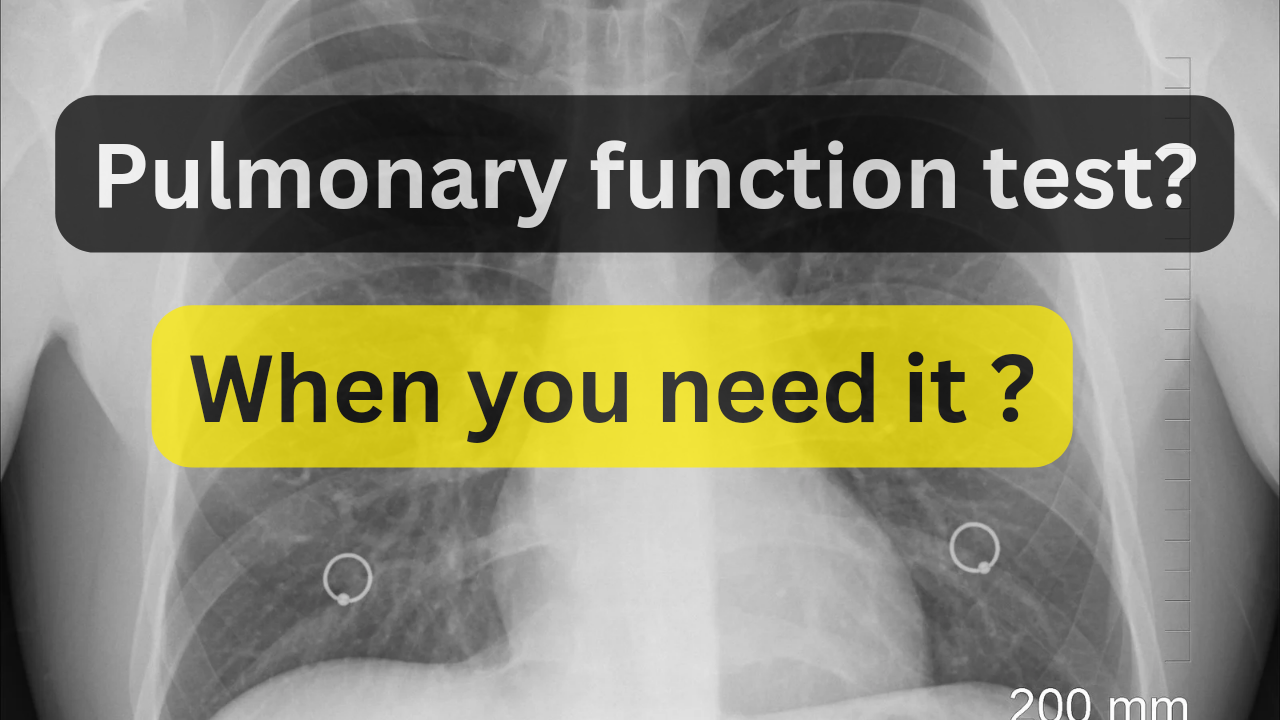A pulmonary function test (PFT) is a noninvasive procedure that assesses lung function and helps diagnose and manage respiratory conditions, such as asthma and other lungs disease.
There are five types of pulmonary function test (PFT).
- Spirometry
- Lung Volume Tests
- Diffusion Capacity Test (DLCO)
- Bronchodilator Reversibility Testing
- Body Plethysmography
Pulmonary function test procedure by spirometry
- The patient is seated comfortably and wears a nose clip to prevent nasal airflow. They breathe into a mouthpiece connected to the spirometer.
- The patient is instructed to take a deep breath and exhale as forcefully and quickly as possible into the spirometer. This measures Forced Vital Capacity (FVC) and Forced Expiratory Volume in one second (FEV1).
- Spirometry may be repeated 2-3 times to ensure accuracy, and the best result is recorded.
Lung Volume Testing procedure
- The patient sits in a small, airtight booth and breathes through a mouthpiece.
- They perform a “panting” maneuver, which helps measure changes in pressure and volume in the lungs, calculating the lung volumes.
Diffusion Capacity Testing procedure (DLCO)
- The patient inhales a small, safe amount of carbon monoxide and holds their breath for about 10 seconds. The test measures how effectively gas transfers from the lungs to the bloodstream.
- After holding their breath, the patient exhales into the testing device, which calculates gas exchange efficiency.
Bronchodilator Reversibility Testing procedure
- A baseline spirometry test is done first.Administering the Bronchodilator: The patient inhales a bronchodilator (often albuterol) to see if it opens up the airways.
- After waiting about 10-15 minutes, spirometry is repeated to measure any improvement in lung function.
